Web
Databus has a built-in Flask website, which shows log and queue data. Whenever the dispatcher is started, the web server is activated too. The Web interface is hosted on Waitress. Web related files are stored in databus/web. It uses BootStrap, JQuery and some minor open source JavaScript libraries.
Configuration
If you don't do any configuration, the Web interface will start as soon as Databus is started. It runs on http://localhost:5000 by default. However, you can change the port or disable the Web interface on your dispatcher ticket.
Logging in
When you access the site for the first time, you are asked for three parameters to log in.
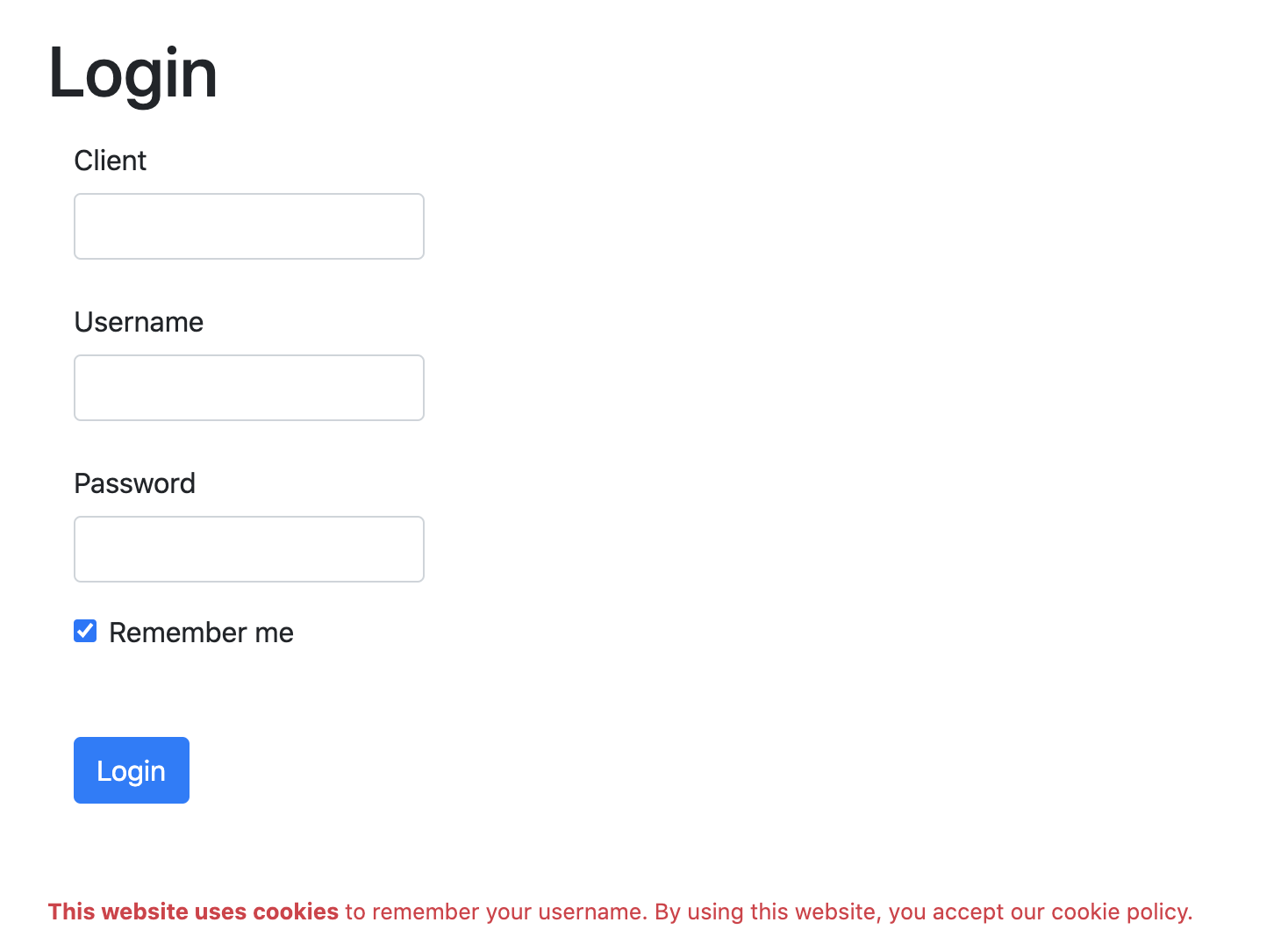
- Client: Name of the client you want to manage. This can be any client defined in the database, or "root" if you'll do something more adventureous.
- Username: Obvious.
- Password: Obvious.
The web contents will change depending on the role of the user. If you log in using a client account, you can only manage that particular client. If you log in with the root account, you can manage all clients and take extra actions; such as shutting down Databus.
If you just installed Databus, you can use one of the supplied accounts.
- demo - demo - demo
- root - root - root
Passengers
This section will list the passengers defined in the database.
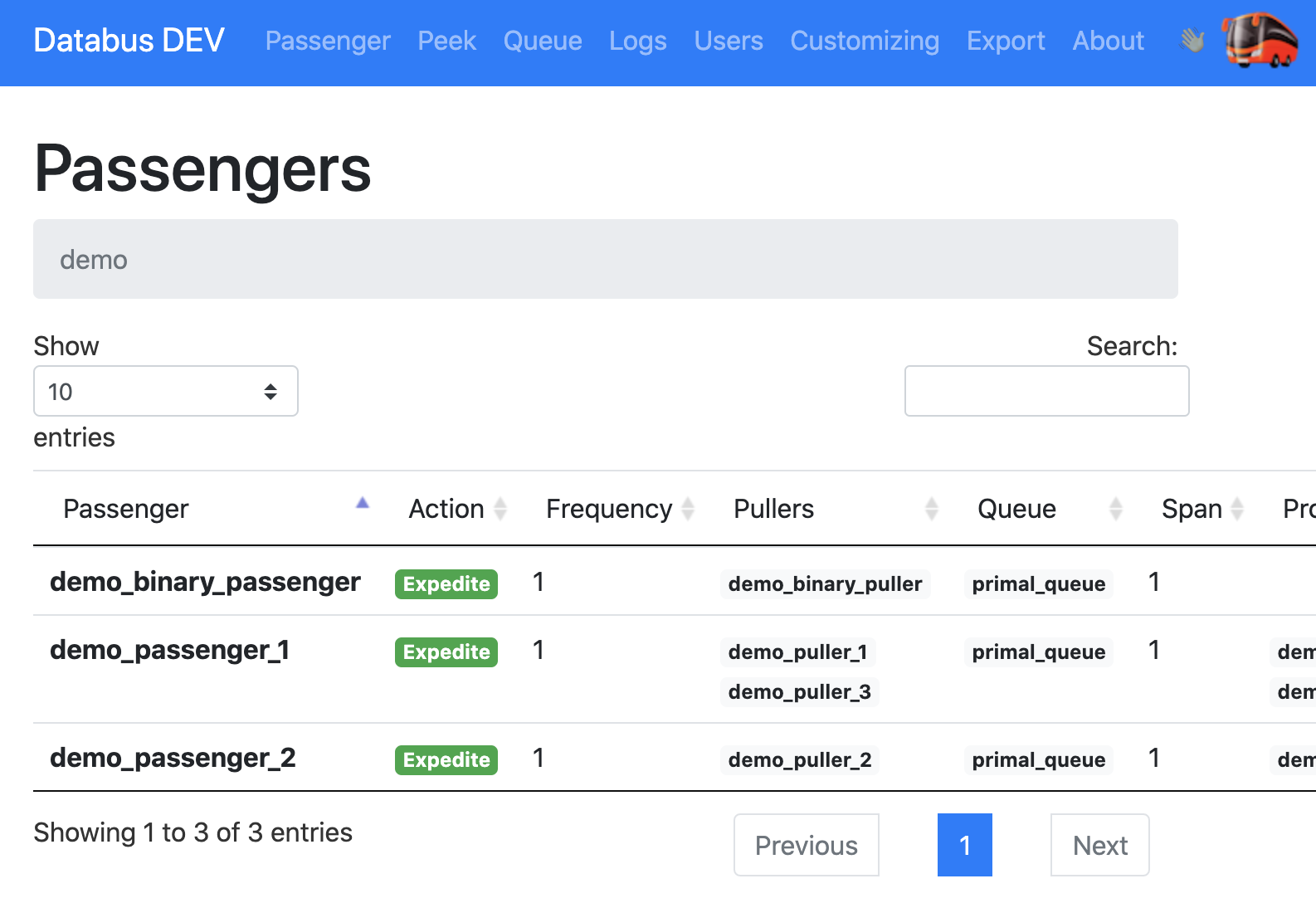
If you click "Expedite" for a passenger, the dispatcher will sync that passenger within a minute - instead of waiting for its next schedule.
Peek
This section can be used to peek into the source systems to see what is waiting to be pulled. For example, if your app is pulling E-Mails from Exchange, this section will peek into the inbox and show what's there.
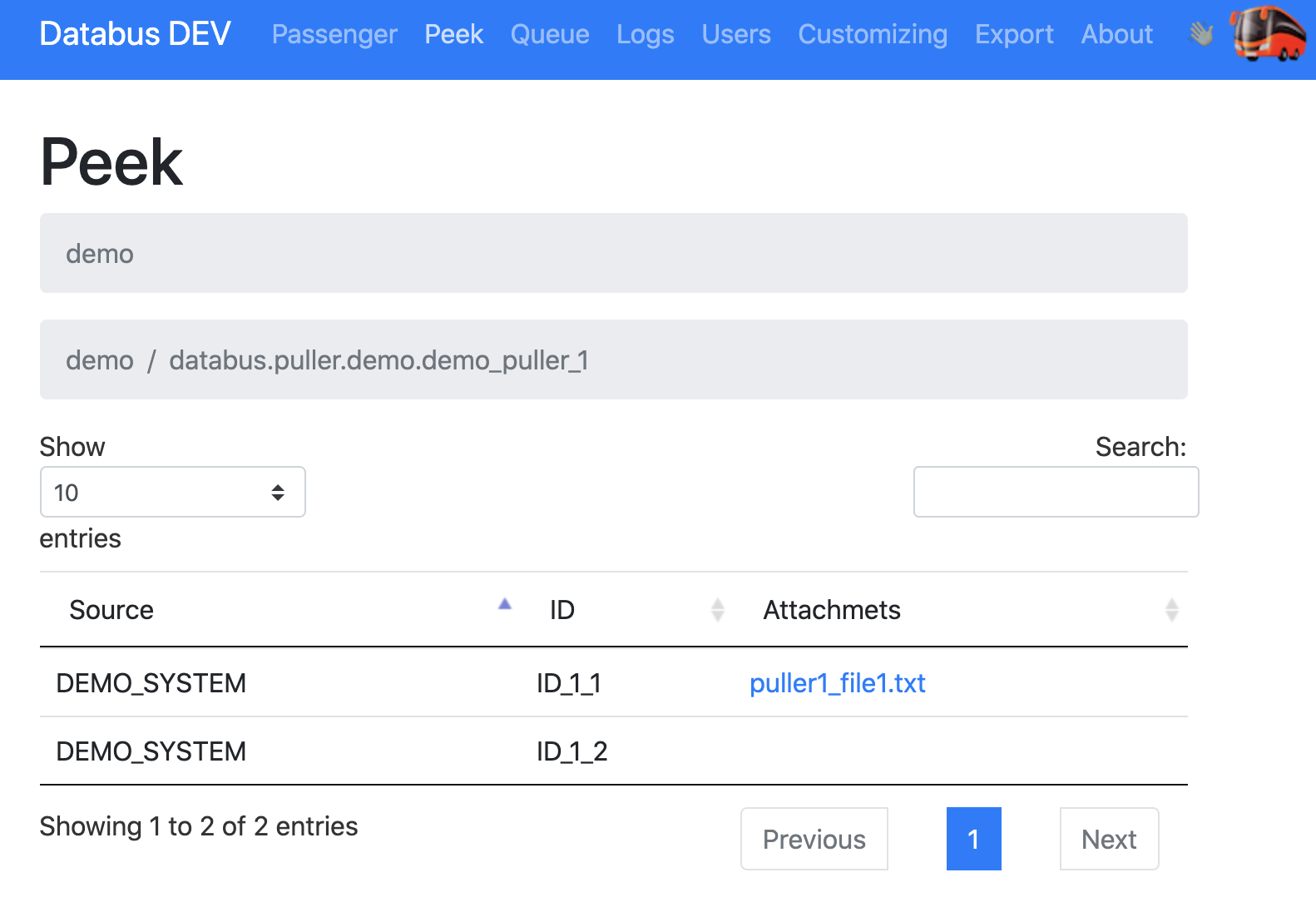
Queue
This section will show the passengers in the queue along their statuses.
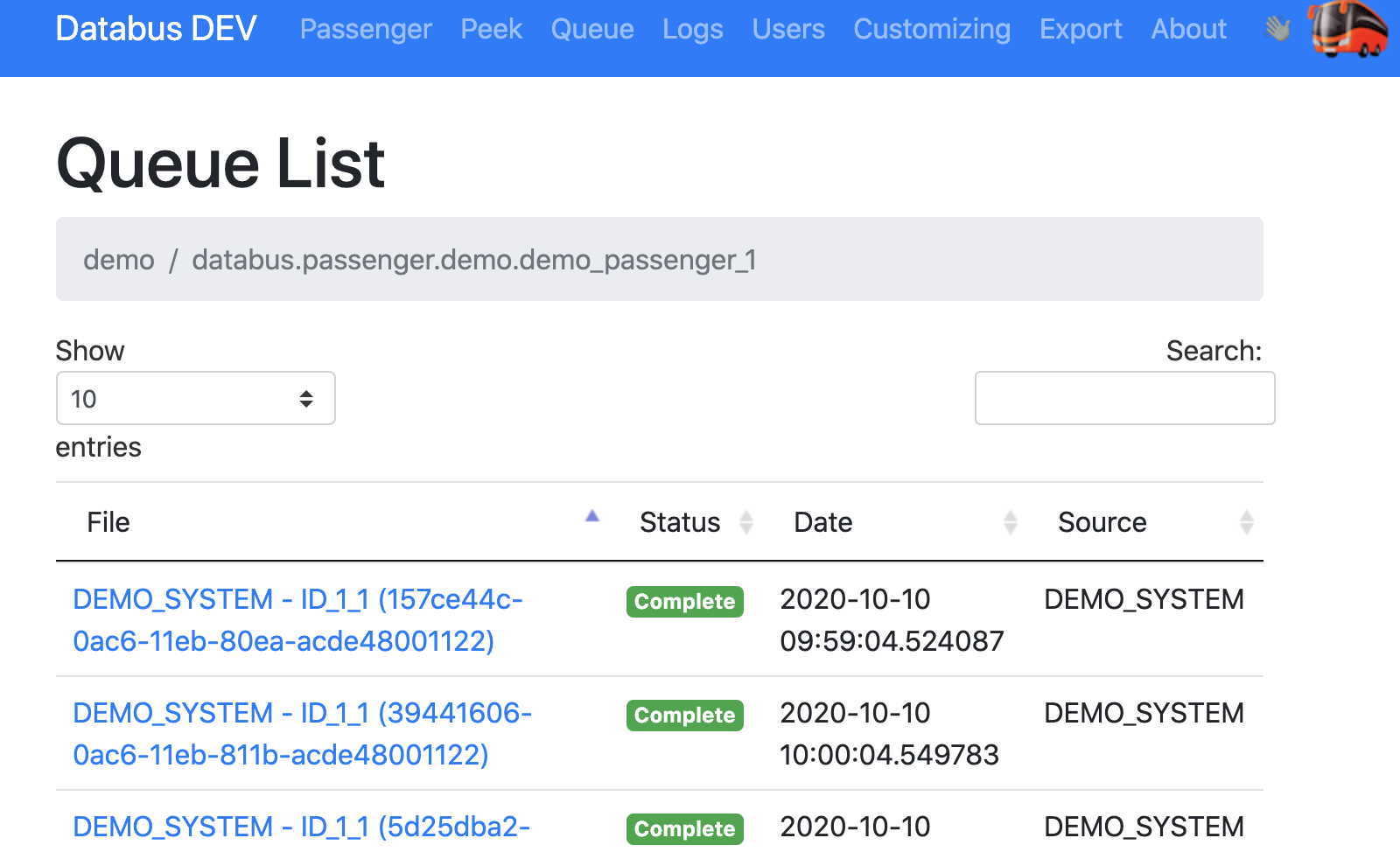
If you click "Purge", the completed passengers will be removed from the queue. According to your database configuration, Databus automatically purges old queue entries anwyay - but this button is useful if you need to purge manually.
If you click on a passenger, you can see its details.
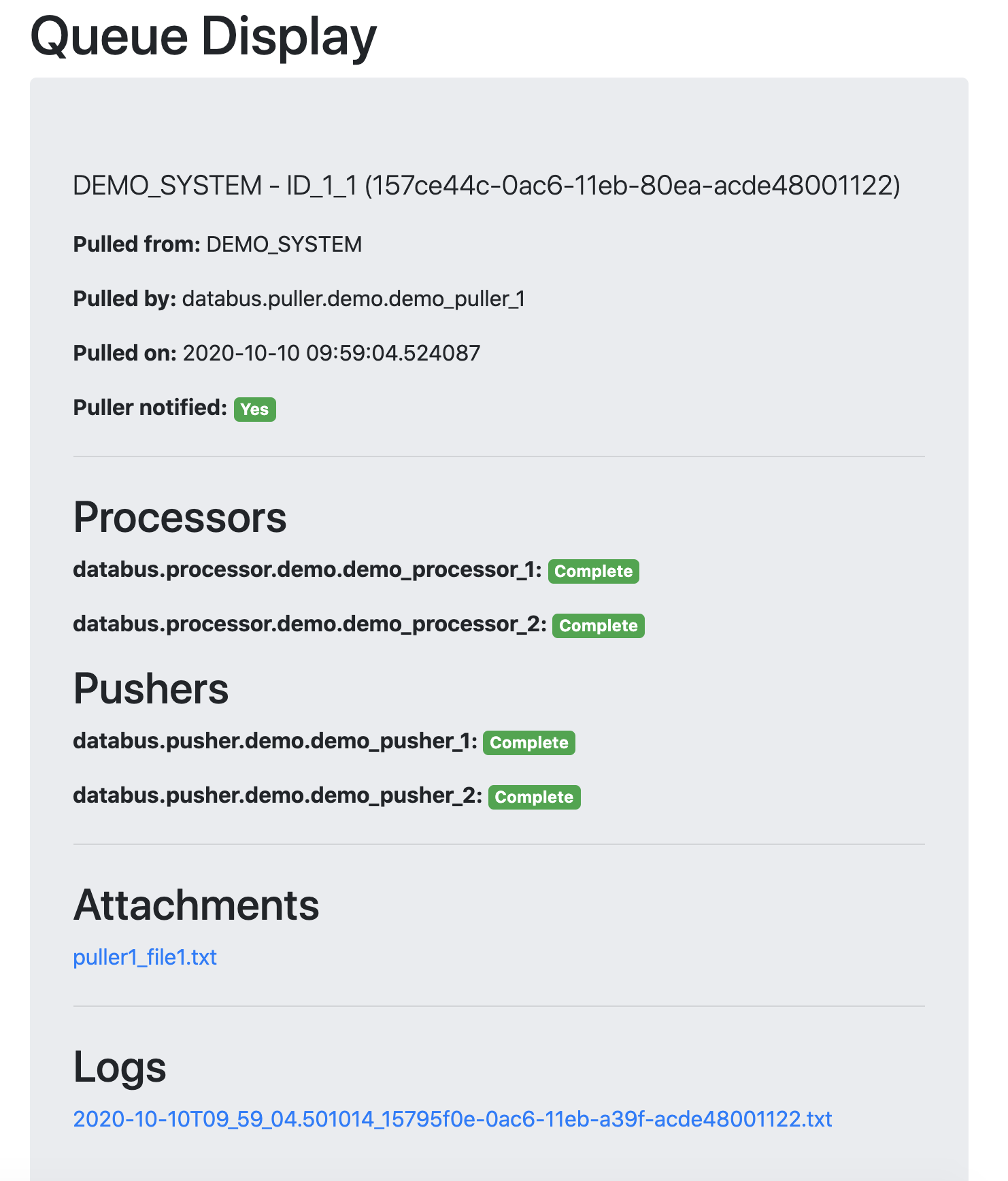
-
You can click any status to change it. For example, clicking on a "Complete" status will change it to "Incomplete"; forcing the driver to re-process it. Or; clicking on an "Incomplete" status will change it to "Complete" so that the driver won't process it further.
-
Attachments can be viewed & downloaded directly.
-
Log files related to that particular passenger can be viewed from here directly.
Log
Generated log files can be viewed here. Good for hunting down errors.
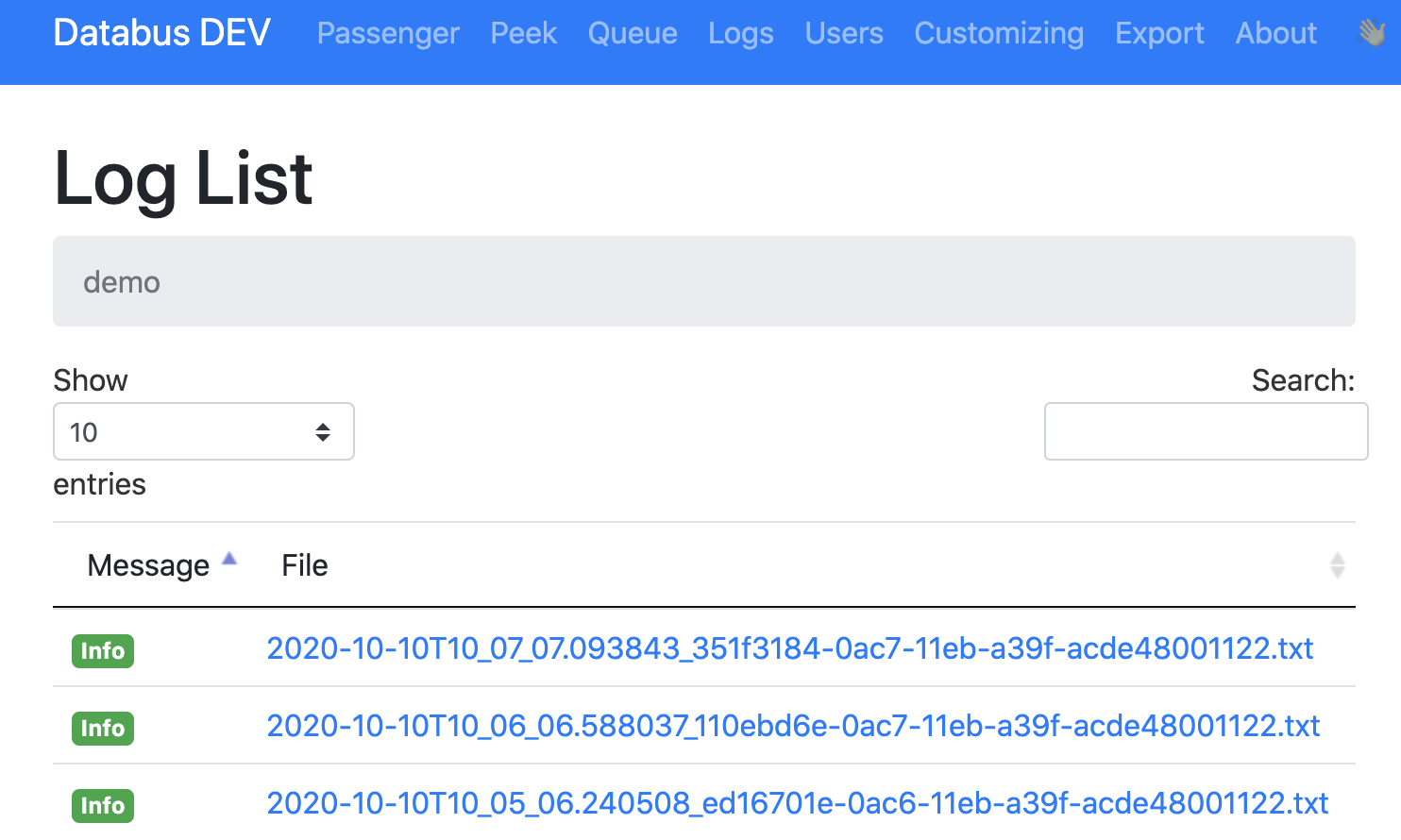
If you click "Purge", all log files will be removed. According to your database configuration, Databus automatically purges old log files anwyay - but this button is useful if you need to purge manually.
If you click on a log file, you can see its contents.
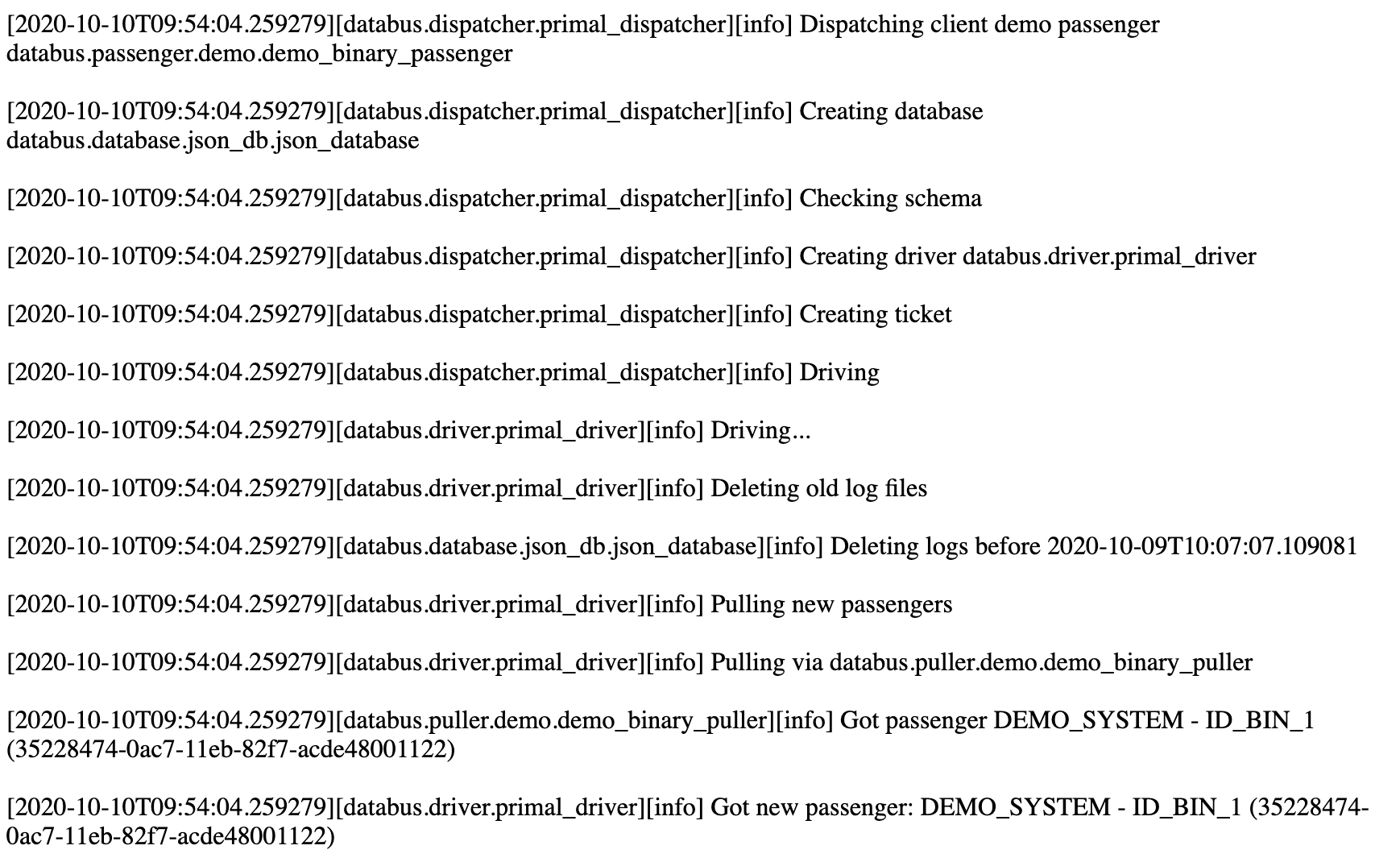
Users
This section will list the users defined in the database.
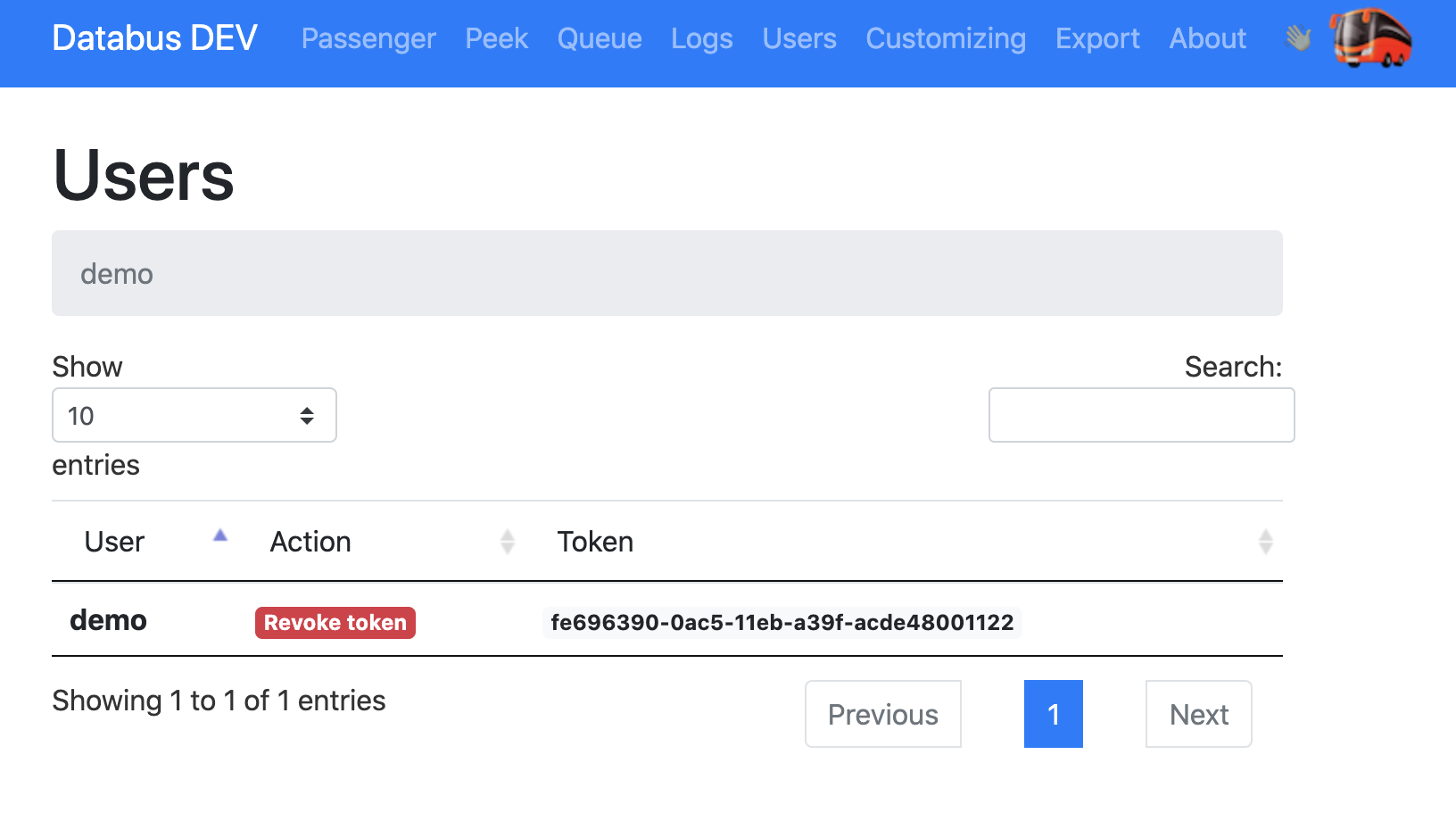
If you click "Revoke token", Databus will no longer remember this user and he/she will need to re-authenticate.
Customizing
This is the section where you can alter system parameters.
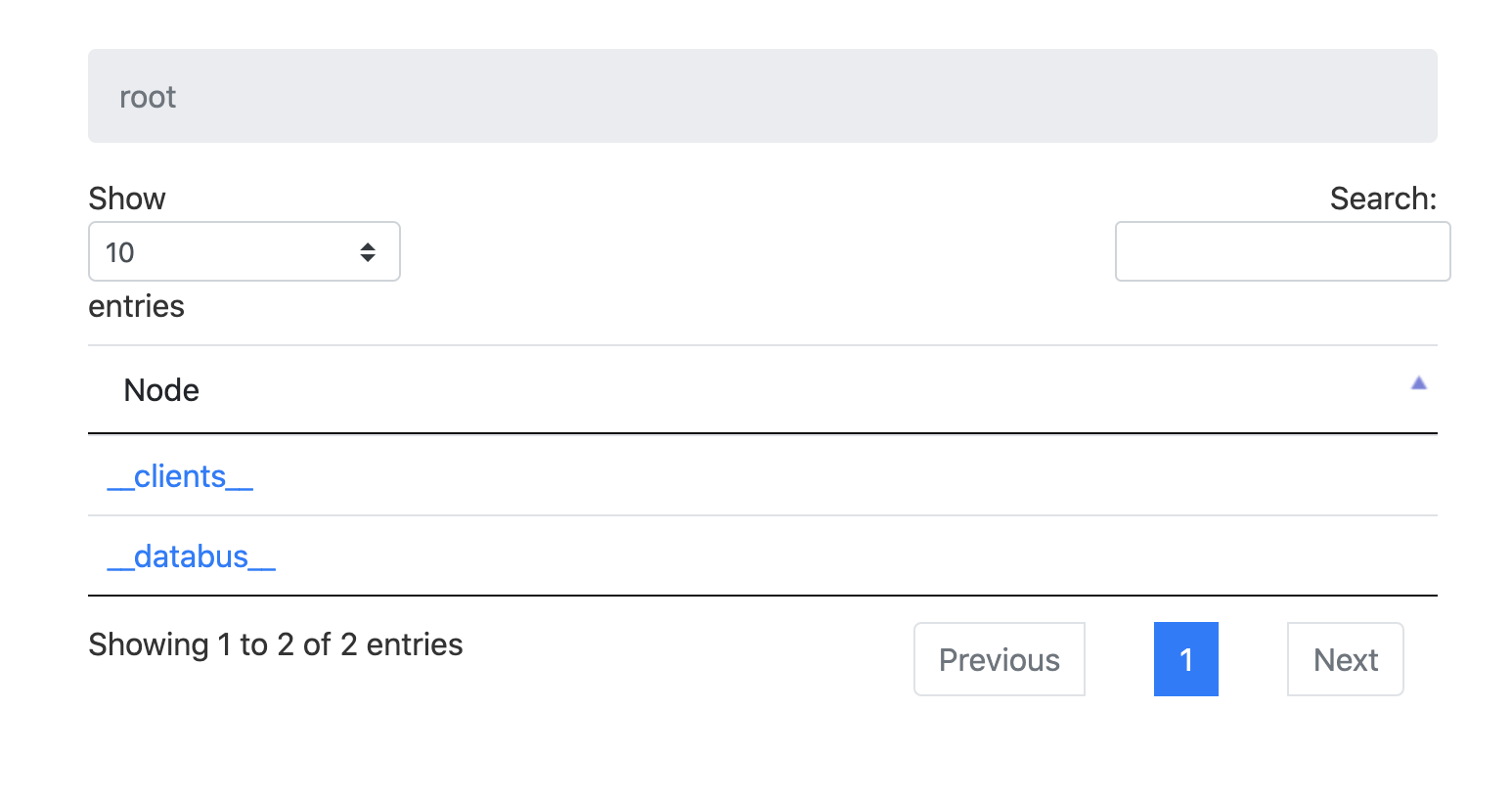
You will see two kinds of nodes here.
- Nodes starting with __ are files of the Databus standard.
- Nodes with regular names are additional files provided in the dispatcher ticket
Typically, each file here is expected to be in JSON format.
Some __ nodes can only be accessed with the root user.
Export
If you want to backup your data or migrate to another database, this is your section.
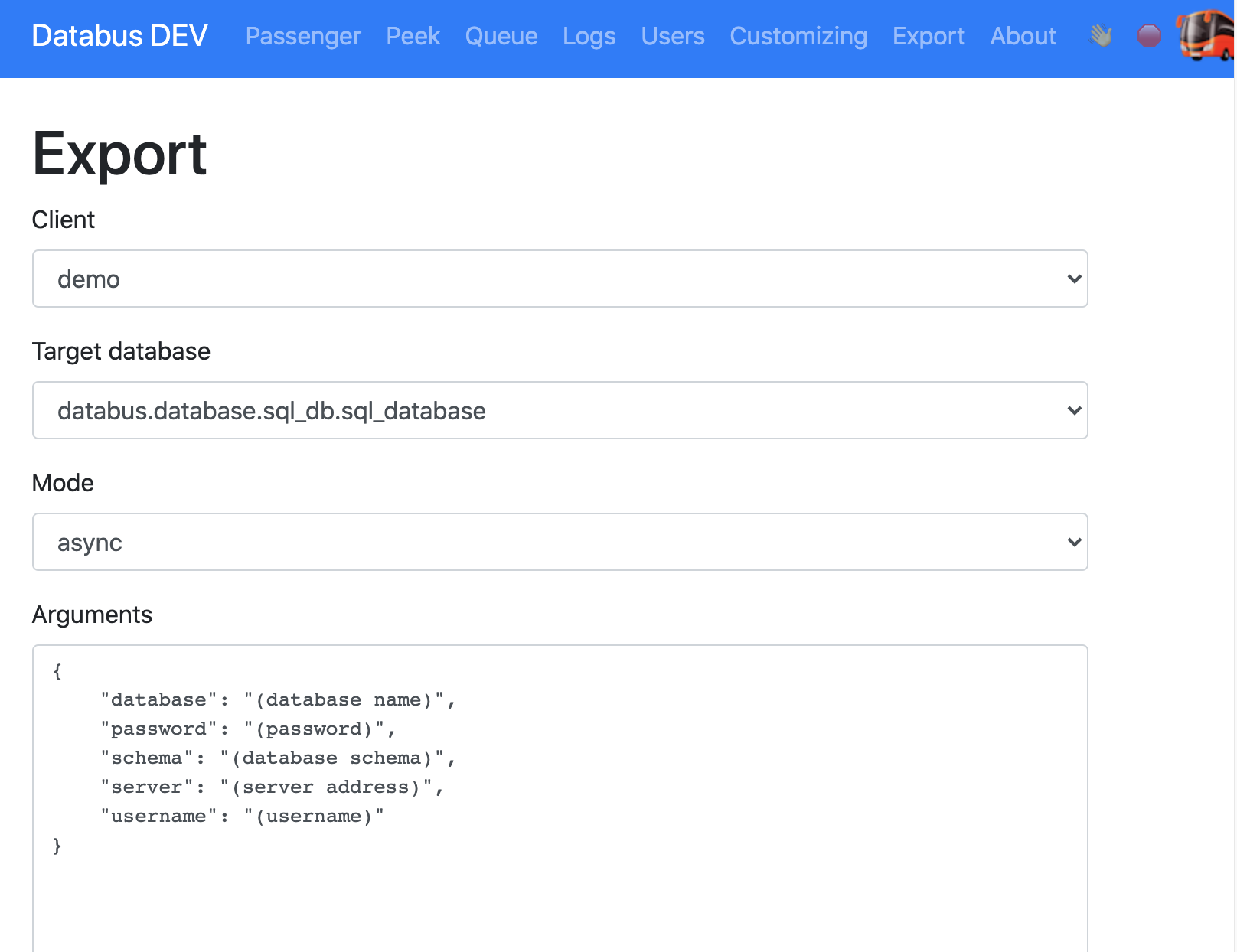
Depending on the database you have selected, Databus will ask for additional parameters.
The export operation can be executed in two modes:
- Async: In the background. Good for large volumes of data.
- Sync: In the foreground, real time. Good for small volumes of data.
About
Provides a good amount of system information.
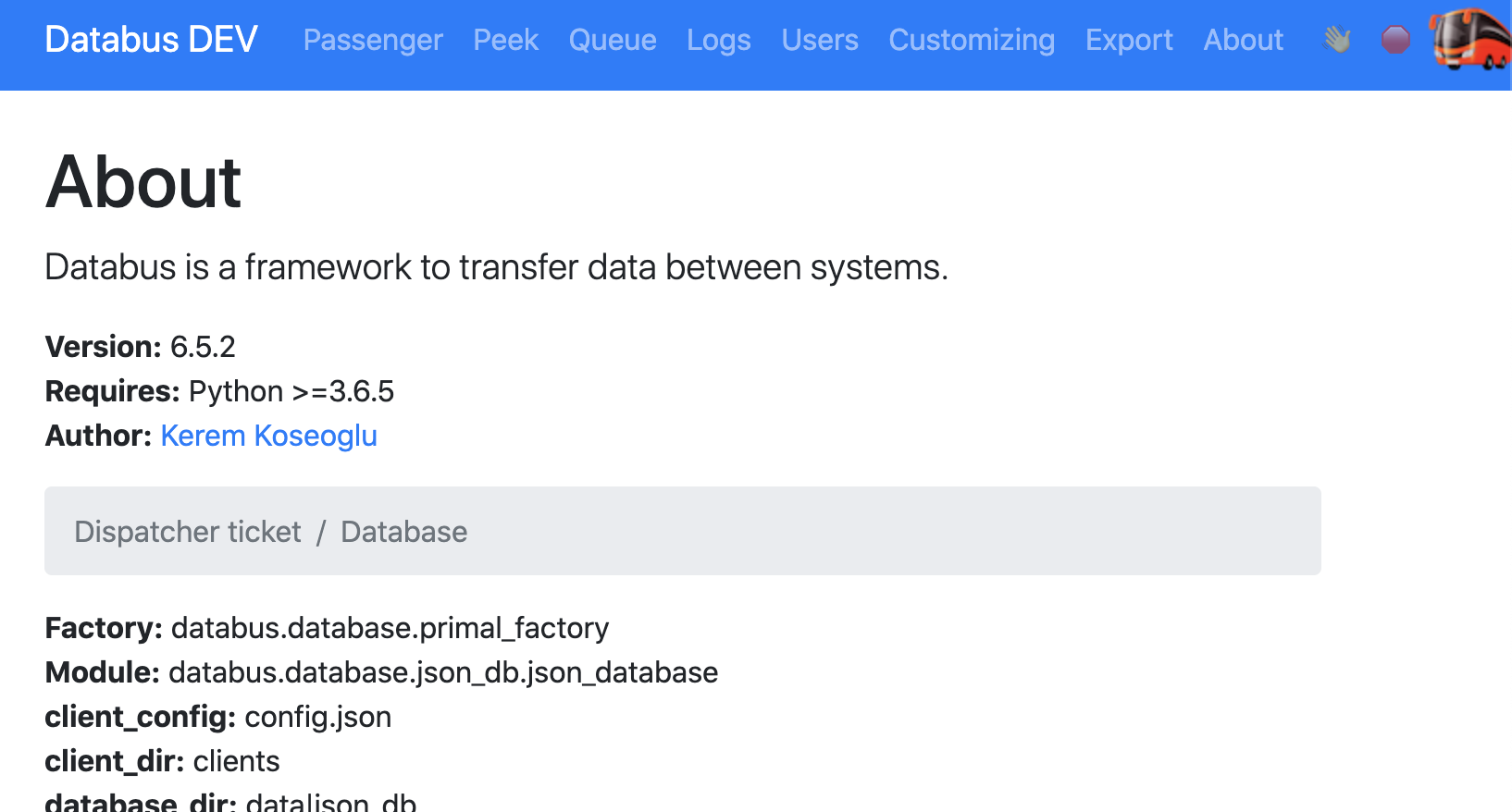
Logout
The 👋 emoji on top can be used to logout of Databus.
System
The 🎛 emoji on top can be used to access the system page. Note that this section is only available to the root user.
- Pause: The system will finish active drivers first, then pause safely. The dispatcher will deactivate until you resume.
- Resume: The system will continue working. This means that the dispatcher will activate again.
- Shutdown: The system will finish active drivers first, then shutdown safely. If you shutdown in any other way, you may cause unwanted data inconsistencies.